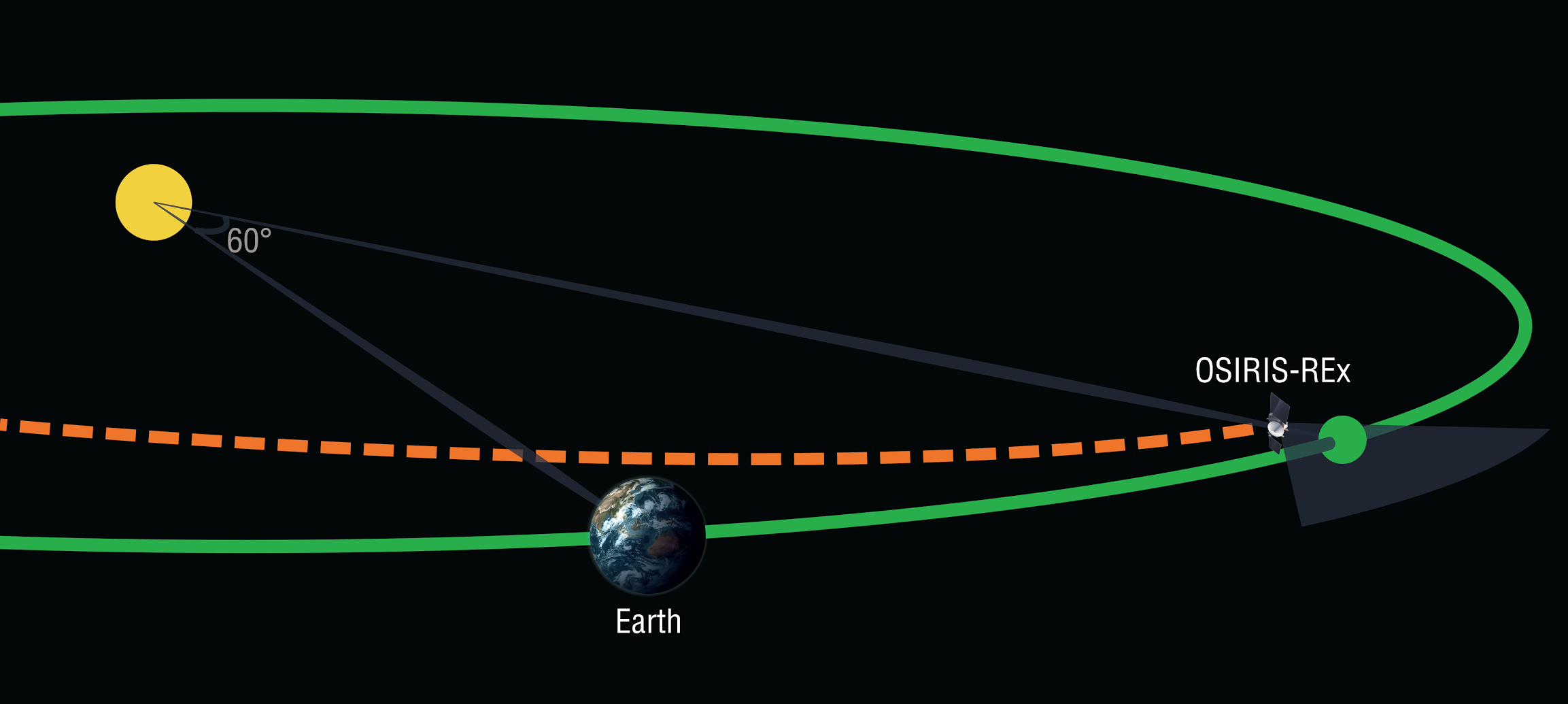Right now, OSIRIS-REx is one of the busiest spacecrafts in the solar system. OSIRIS-REx, which blasted off in September 2016, has been getting ready to rendezvous with the object of its mission — an asteroid called Bennu — in order to bring back samples to Earth. But before the spacecraft links up with Bennu in 2018, it’s been assigned a side project.
Image: NASA’s Goddard Space Flight Center
For 10 days this month, OSIRIS-REx will investigate whether or not Trojan asteroids exist at certain points in Earth’s orbit called Lagrange points. Though Jupiter has Trojan asteroids, it’s unclear whether or not Earth’s Lagrange points host similar objects. After all, only one Earth Trojan has ever been found.
“The Earth orbits around the Sun, and the Earth has a gravitational field and the Sun has a gravitational field,” explained Dante Lauretta, OSIRIS REx’s principal investigator. “Because of that property, there are certain points in space where those two fields balance each other out, called Lagrange points.”
OSIRIS-REx will be tuning its instruments to search for trojans at two Lagrange points called L4 and L5, which are stable enough that asteroids could feasibly exist there. These points are located 60 degrees ahead of and 60 degrees behind the Earth in its elliptical orbit around the Sun.
“There are regions of stability that persist back to the formation of the solar system,” Lauretta said. “That’s really exciting, because there’s a chance material that built the Earth are remnants of that trapped in these Lagrange points.”

Image Courtesy of the University of Arizona/Heather Roper
A lot of research regarding Earth’s origins focuses on meteorites. But most of the meteorites on Earth hail from the Asteroid Belt between Mars and Jupiter. Looking at the trojan asteroids our planet shepherds might provide a more accurate snapshot of the material our planet formed from.
“While [meteorites from the Asteroid Belt] tell you a lot about the early solar system and the geologic evolutions of our planets, they don’t actually represent the material that went into creating the majority of the Earth,” Lauretta said. “The idea that we could find primordial building blocks of our planet trapped at the Lagrange points…I thought that was super exciting.”
Since it launched in September, OSIRIS-REx hasn’t wasted a moment. It has performed a series of successful trajectory-altering maneuvers, in addition to accomplishing a deep space manoeuvre to prepare for an Earth flyby in September 2017, in order to increase its heliocentric speed and inclination. From there, it will be off to Bennu, which orbits the Sun at a distance of 1.6 and 0.8 astronomical units (1 AU is the distance between Earth and the Sun). OSIRIS-REx and Bennu will finally rendezvous in August 2018.
“Everything has gone nominal and according to schedule,” Lauretta said. “We are now dead center on the Earth gravity assist [in September].”
We look forward to OSIRIS-REx’s report back soon. Safe travels, little guy!
